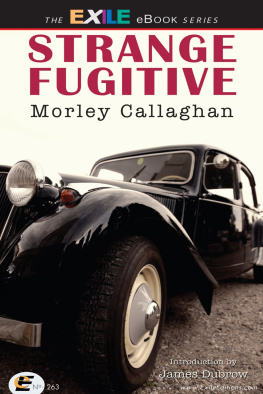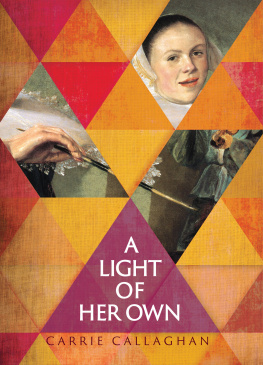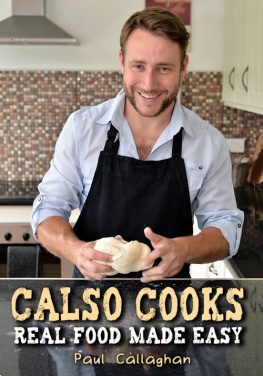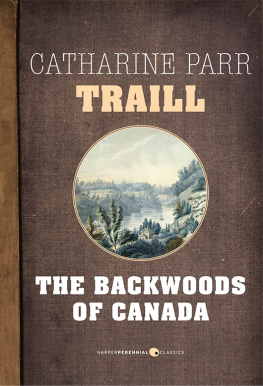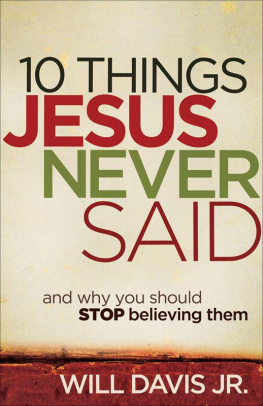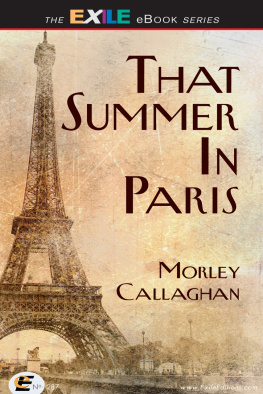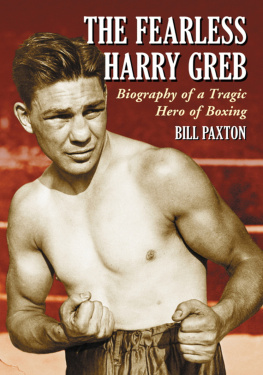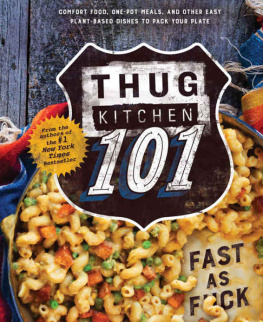Callaghan - Strange Fugitive
Here you can read online Callaghan - Strange Fugitive full text of the book (entire story) in english for free. Download pdf and epub, get meaning, cover and reviews about this ebook. City: Holstein;Ont, year: 2011, publisher: Exile Editions, genre: Detective and thriller. Description of the work, (preface) as well as reviews are available. Best literature library LitArk.com created for fans of good reading and offers a wide selection of genres:
Romance novel
Science fiction
Adventure
Detective
Science
History
Home and family
Prose
Art
Politics
Computer
Non-fiction
Religion
Business
Children
Humor
Choose a favorite category and find really read worthwhile books. Enjoy immersion in the world of imagination, feel the emotions of the characters or learn something new for yourself, make an fascinating discovery.
- Book:Strange Fugitive
- Author:
- Publisher:Exile Editions
- Genre:
- Year:2011
- City:Holstein;Ont
- Rating:4 / 5
- Favourites:Add to favourites
- Your mark:
- 80
- 1
- 2
- 3
- 4
- 5
Strange Fugitive: summary, description and annotation
We offer to read an annotation, description, summary or preface (depends on what the author of the book "Strange Fugitive" wrote himself). If you haven't found the necessary information about the book — write in the comments, we will try to find it.
Strange Fugitive — read online for free the complete book (whole text) full work
Below is the text of the book, divided by pages. System saving the place of the last page read, allows you to conveniently read the book "Strange Fugitive" online for free, without having to search again every time where you left off. Put a bookmark, and you can go to the page where you finished reading at any time.
Font size:
Interval:
Bookmark:

In the summer of 1923, as a brutal gang war for control of the lucrative bootleg trade raged in Southern Ontario, Morley Callaghan, then a twenty-year-old second-year student at the University of Toronto, landed a seasonal job as a cub reporter at the Toronto Star. His life was to change dramatically. Within a month he befriended one of the Stars best reporters Ernest Hemingway. The two shared many literary interests. Hemingway, after reading just one of Morleys stories, told him:You are a real writer; you write big-time stuff. Two years later, having read several more of his stories, Hemingway wrote Morley from Paris: If you want encouragement and backing let me tell you right now and you can cut this out and paste it in the front of your prayer book that you have the stuff and will be a hell of a fine writer and probably the first writer thats ever come out of Canada. This part of the Morley Callaghan story is well known.
But what isnt known or understood about Morley is that his first novel, Strange Fugitive, published by Scribners in New York in 1928, grew directly out of his experiences as a reporter at the Star. Whether by direct involvement through interviews, research or writing, or just from the intense daily office scuttlebutt, Morley became familiar with the bootlegging scene, the speakeasies and the underworld characters in downtown Toronto in the immigrant Ward area.
A Star man Morley almost certainly met and worked with was Dave Rogers, a young crime reporter working exclusively on the deadly gang war (he also likely met Athel Gow and C. Roy Greenaway and other local Star crime reporters). Editor Harry Hindmarsh, along with publisher Joe Atkinson, had started a platoon system; the saturation treatment of sensational stories in which everyone from reporters to copy editors was thrown into coverage. Callaghan would have been involved, one way or another, in several major stories, especially this one:
On May 10, 1922, Mafia boss Domenic Scaroni had been killed after leaving a mob banquet in Guelph, clearing the way for well-known Hamilton Mafia boss Rocco Perri to become the undisputed head of the Calabrian Mafia in Ontario. Perri controlled a large part of the bootleg trade in and out of the province. For the Scaroni killing Rocco Perri used one of his Niagara Falls lieutenants, John Trotta (a.k.a. Trott) who, along with Mike and Tony Trotta (his two brothers), was a major bootlegger and booze exporter to the United States. John Trotta was the last man to see Scaroni alive and later also arranged for the murder of his brother Joe Scaroni in September 1922. The policeman investigating the two Scaroni hits was John Trueman of Thorold, and as he was closing in on Trotta, he was himself killed. Trotta was charged with the murder by the OPP. Rocco Perri then paid for his lawyer and sat directly behind Trotta every day of the trial which ended in a hung jury on November 14, 1925. (But in a second trial in February 1925, Trotta was convicted of killing Constable Trueman and got a life sentence.)
Within days, more bodies of victims were discovered in Hamilton and the Star editor decided to opt for platoon coverage of the war. On November 17, 1925, a breathlessly florid piece entitled Mountain of Murder began with Hamilton Mountain has become a place of skulls, a mountain of human sacrifice. It is like one of the stone pyramids on which the bloodthirsty Aztec priests cut the throats of innumerable victims... Another article that day, by Dave Rogers, gave the background for two of the killings and quoted sources as saying that the king of the bootleggers was directly involved.
Rogers followed this up in a few days with a remarkable exclusive interview with Rocco Perri and his Jewish common-law wife, Bessie, who proclaimed that Rocco was the King of the Bootleggers and discussed many of the inner workings of criminal mob activity including his theory about the killings, concepts of vengeance and honor. This was a major scoop and copies of the Star were sold out within minutes, with scalpers later that day selling the paper at astronomical prices. Rocco Perri became a household name.
In a few months, a mob-imported batch of poison brew killed forty-three people in Ontario and New York state and the public clamored for the arrests of the high-profiled Perri and his fellow bootleggers. Among those arrested were Perri, Ben Kerr, known as the king of the smugglers, and three Toronto Jewish bootleggers (Max and Harry Wortzman and Harry Goldstein) but there was not enough evidence to convict these gangsters. Finally in 1926, there was enough public pressure to force the federal government to appoint a major Royal Commission on the bootleg trade. The hearings were another huge media event in 1927 with Harry Hatch of Gooderham and Worts, Rocco and Bessie Perri, and many bootleggers publicly taking the stand in 1927 even as Callaghan was writing Strange Fugitive. Rocco Perri received a six-month sentence for perjury, his only jail time in his long criminal career.
The story of Strange Fugitive, rooted in these actual events, is told through the eyes of Harry Trotter, an Ontario white Anglo-Saxon Protestant of self-described pioneer stock, who establishes himself as a major bootlegger in the foreign-dominated multicultural underworld of 1920s Toronto. It seems certain that the name Trotter is an anglicization of Trotta, surname of three of the family who were Perris Niagara Falls lieutenants.
There is little heroic about Harry Trotter. He is superficial, insufferably self-centered, domineering, sexist, promiscuous, bigoted, and psychopathic. Yet what makes the novel of this unimaginative thug fascinating is its vivid depiction of the underworld jungle he chooses to enter and of the boring, smug, middle-class Toronto everyday world from which he rebels. He is an early literary example of the modern alienated outsider made popular much later in the existential novels of Albert Camus and Jean-Paul Sartre, and discussed in the classic Colin Wilson study The Outsider, where criminals are depicted as outsider antiheroes. In his Introduction to the last edition of Strange Fugitive in 1970, Robert Weaver remarked, There is a prophetic strain in Strange Fugitive. Harry Trotter reminds me in many ways of the antihero of [Camus 1942 novel] The Stranger... At one point Trotter, as if he were a Merseault, tells his wife Vera that he wants to be alone and not have to think about anyone. I want to drift wherever I feel like. I dont want to be tied to the thoughts of anyone. And Trotter throughout the novel, untied to his thoughts, loses his sense of identity many times. In the last part of the novel he sees his identity only through the items around him in his office at the book store,
... slowly becoming aware of every object in the room. He noticed the desk, its size, glass pen-container, four pens on it, big blotting paper, mahogany chairs, carpet, the pattern. He was alone in the room and each one of these objects had assumed an identity of being for him. He became so conscious of them he felt that he couldnt really be alone while they were in the room... He often does not know who he is or why he is. He is not comfortable in the gangster world, or the mainstream world or, indeed, in his own skin. He is a misfit, a mistake, and we are spectators in his journey through the underworld where he loses his identity for real in a shootout in downtown Toronto.
The original title Morley had for the novel was Big Boy but Maxwell Perkins, Callaghans New York editor, didnt like it, so Callaghan came up with
Font size:
Interval:
Bookmark:
Similar books «Strange Fugitive»
Look at similar books to Strange Fugitive. We have selected literature similar in name and meaning in the hope of providing readers with more options to find new, interesting, not yet read works.
Discussion, reviews of the book Strange Fugitive and just readers' own opinions. Leave your comments, write what you think about the work, its meaning or the main characters. Specify what exactly you liked and what you didn't like, and why you think so.

